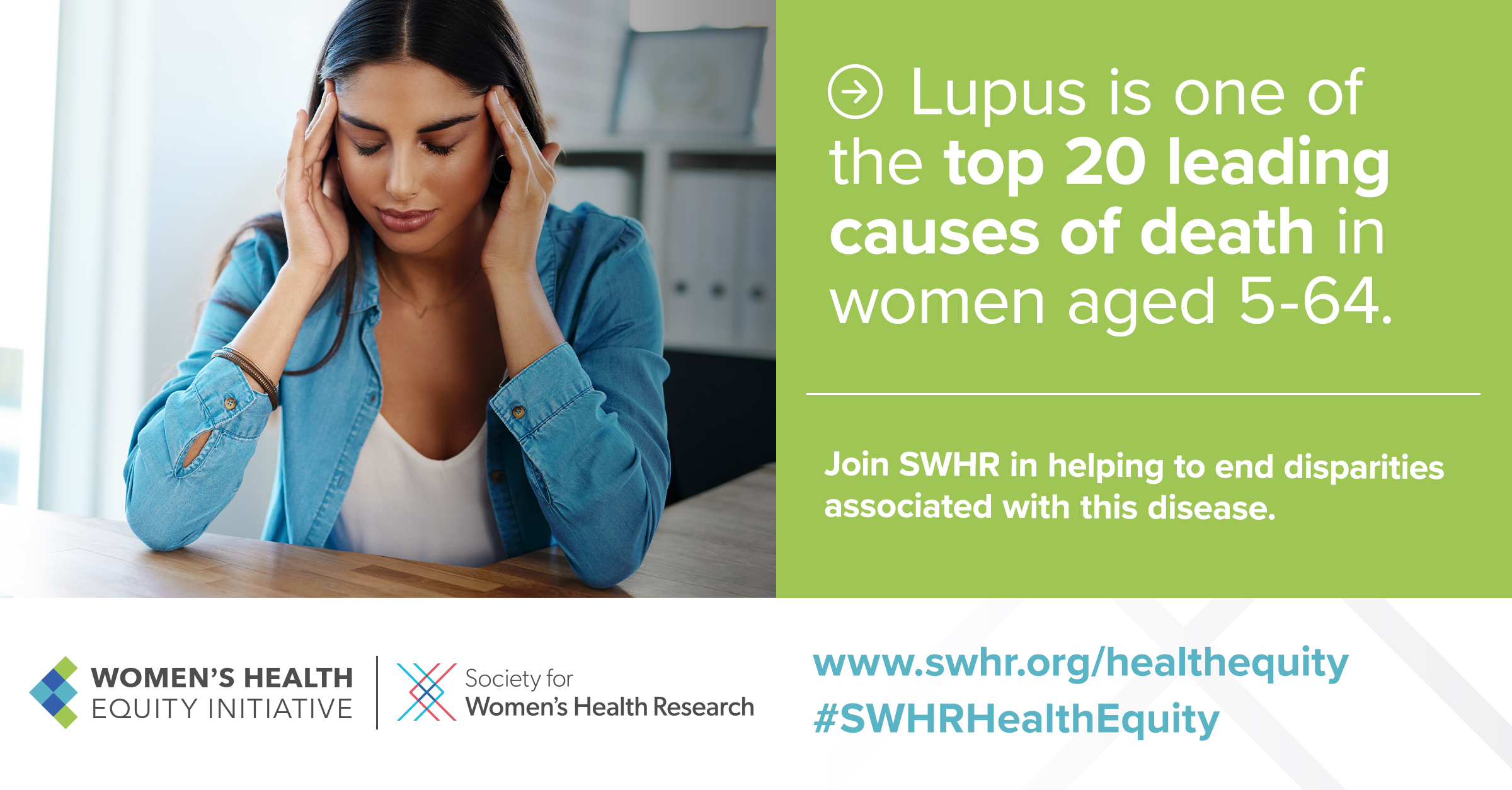Lupus is one of many conditions in which women, both in the United States and across the globe, experience health disparities. It is more prevalent among women than men—and among women—is more prevalent in African American, Hispanic and Latina, Asian American, Native American, Alaska Native, Native Hawaiian and other Pacific Islander women than in white women. Specifically, 90 percent of lupus patients are women between the ages of 15 and 44.
To bring attention to these disparities and help support individuals impacted by lupus, the Society for Women’s Health (SWHR) added lupus to the Women’s Health Equity Initiative campaign this May, in recognition of Lupus Awareness Month. Lupus impacts lifelong well-being for women and can result in significant health care costs for individuals, families, communities, and the U.S. economy the longer its disparities are overlooked.
Highlighting Health Disparities in Lupus
Lupus is a chronic, life-altering disease that causes the body’s autoimmune system to attack its own tissues and organs. This is currently no cure for lupus, so most treatment is focused on managing disease symptoms. Women who have lupus are at a greater risk of developing other autoimmune diseases or chronic health conditions, preeclampsia and other pregnancy complications, and certain cancers (particularly due to taking immunosuppressants). Average annual health costs for people with lupus can reach $50,000, and may be higher if facing more severe or active lupus. For many with lupus, caregivers play a critical role as they support personal care, manage medications, attend doctors’ appointments and much more. But, caregivers, too, face challenges like stress and managing work or productivity time. Learn more about disparities women with lupus face in the lupus portion of the Health Equity Roadmap.
Read more about lupus in SWHR’s other resources, including the Living Well With Lupus Toolkit, the “Closing the Loop for Lupus” webinar series, and several of our latest lupus blog posts.
Overview of the Women’s Health Equity Initiative
The Women’s Health Equity Initiative was launched one year ago, in May 2022, to highlight statistics on women’s health in the United States and to engage communities on solutions to improve health equity across multiple disease states, conditions, and life stages. The Women’s Health Equity Initiative now focuses on five conditions that impact women across the lifespan: Alzheimer’s disease, bone health, lupus maternal health, and menopause. Read more about the other four conditions:
- Alzheimer’s disease and related dementias disproportionately affect women, with women of color facing a particularly high burden. Estimated costs for the treatment of Alzheimer’s disease in 2020 is $305 billion, was and it is expected to increase to more than $1 trillion in coming years, by 2050.
- Osteoporosis disproportionately affects women, impacting one in five women aged 50 and older, compared to just one in 20 in men over 50. Estimated costs of care for osteoporotic fractures among Medicare beneficiaries will rise from $57 billion in 2018 to $95 billion by 2040.
- The United States has a maternal health crisis, facing highest rate of maternal deaths among developed nations, with about 700 women dying each year. Some evidence suggests that stress associated with racial discrimination among Black women can increase the risk of negative perinatal outcomes.
- The transition through menopause most often begins in women between the ages 45 and 55. Globally, menopause-related productivity losses can amount to more than $150 billion a year.
The addition of lupus to the Women’s Health Equity Initiative this year is just the beginning. SWHR will cover other issues within the Women’s Health Equity Initiative in the future and continues to seek sponsors and health care stakeholders interested in supporting SWHR’s health equity work. Please reach out to development@swhr.org to learn about partnering on this work.
